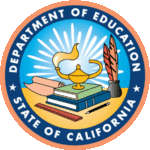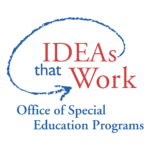The book looks at the different avenues in the schooling process that can lead to underserved and routinely disciplined students entering the prison system. It is important for practitioners to read because it highlights the legal rights students have that may thwart some of the forces that contribute to the school to prison pipeline.
Kim, C. Y, Losen, D. J., and Dewitt, D. T. The school-to-prison pipeline: Structuring legal reform. New York: New York University Press, 2010.
The article provides a conceptual map for understanding how policy, practice and people intersect in schools. The article is useful for practitioners that want to understand how federal mandates, school practices and the multitude of individuals in schools can coalesce into a system that improves general and special education.
Klingner, J. K., Artiles, A. and others. “Addressing the Disproportionate Representation of Culturally and Linguistically Diverse Students in Special Education through Culturally Responsive Educational Systems.” Education Policy Analysis Archives, 13(38), 2005: 1-41.
The paper by the Council for Children with Behavior Disorders critically questions the effectiveness of federal policy and disproportionality monitoring mechanisms. It is an important piece to read because it questions how the provisions in IDEA, and compliance to IDEA, can address disproportionate outcomes. It offers practitioners the chance to reflect on how they understand IDEAs relationship to abatement of disproportionate outcomes.
Skiba, R., S. Albrecht, and D. Losen. 2012. CCBD’s Position Summary on Federal Policy on Disproportionality in Special Education. Arlington, VA: Council for Children with Behavioral Disorders.
In this presentation, Special Education researcher Mitchell Yell examines the connections among MTSS, PBS, and the 2017 Endrew F. Supreme Court ruling in terms of their impact on public schools.
The IDEA Data Center (IDC) is funded by the U.S. Department of Education's Office of Special Education Programs (OSEP) to provide technical assistance to build capacity within states for collecting, reporting, analyzing and using high quality IDEA Part B data.
IDEA Data Center (IDC). IDEA Data Center. https://ideadata.org (accessed June 6, 2021).
This document highlights national data regarding the number of students with disabilities that are receiving a free and appropriate public education (FAPE). The data are disaggregated by gender, location of education, English language proficiency, type of disability, disciplinary removals, and by state.
Office of Special Education Programs. 2022. OSEP Fast Facts: Educational Environments of Children with Disabilities, Ages 5 (in kindergarten) through 21, Served under IDEA Part B https://sites.ed.gov/idea/osep-fast-facts-school-aged-children-5-21-served-under-idea-part-b-21/ (accessed September 16, 2022).
The OSEP Symposium on Significant Disproportionality explored why this is an important topic for all of us as we work to ensure that children with disabilities, regardless of race or ethnicity, are provided educational services and accommodations that enable and prepare them for post-school education and career opportunities. The Symposium presentations highlighted the key topics from a national perspective, framed the importance of this issue for all OSEP grantees, and provided some examples of practices and strategies that help address significant disproportionality. In addition to the live event, numerous resources related to significant disproportionality have been posted for participants to use as they prepared for the event and as resources to improve services and conditions for children with disabilities in States, districts, schools, and programs.
In this technical assistance document (a companion to the Questions and Answers: Addressing the Needs of Children with Disabilities and IDEA’s Discipline Provisions, which outlines the legal requirements related to behavior support and discipline for eligible students with disabilities under IDEA), the Office of Special Education Programs (OSEP) provides information about resources, strategies, and evidence-based practices that (while not required by law) can help States, LEAs, schools, early childhood programs, educators, and families in their efforts to meet IDEA requirements and, in doing so, improve outcomes for children with disabilities.
Office of Special Education Rehabilitative Services. 2022. Positive, Proactive Approaches to Supporting the Needs of Children with Disabilities: A Guide for Stakeholders
https://sites.ed.gov/idea/files/guide-positive-proactive-approaches-to-supporting-children-with-disabilities.pdf (accessed September 16, 2022).
This document is a summary of the Least Restrictive Environment (LRE) provisions of the IDEA as applicable to preschool aged children with disabilities.
Early Childhood Technical Assistance Center. 2022. Preschool LRE Reference Points and Discussion Prompts. https://ectacenter.org/topics/iep/iep-reference.asp (accessed September 16, 2022).
This document updates and supersedes the Office of Special Education and Rehabilitative Services’ (OSERS) guidance titled Questions and Answers on Discipline Procedures, issued in June 2009 and includes additional questions and answers that address topics that have arisen as the field continues to carry out the discipline provisions of IDEA and its implementing regulations. Key topics include removing a child with a disability from their current educational placement and the responsibilities of individualized education program (IEP) teams to address the behavioral needs of children with disabilities through the evaluation, reevaluation, and IEP development process to ensure the provision of a free appropriate public education (FAPE).
Office of Special Education Rehabilitative Services. 2022. Questions and Answers Addressing the Needs of Children with Disabilities and the Individuals with Disabilities Education Act's (IDEA's) Discipline Provisions
https://sites.ed.gov/idea/files/qa-addressing-the-needs-of-children-with-disabilities-and-idea-discipline-provisions.pdf (accessed September 16, 2022).


